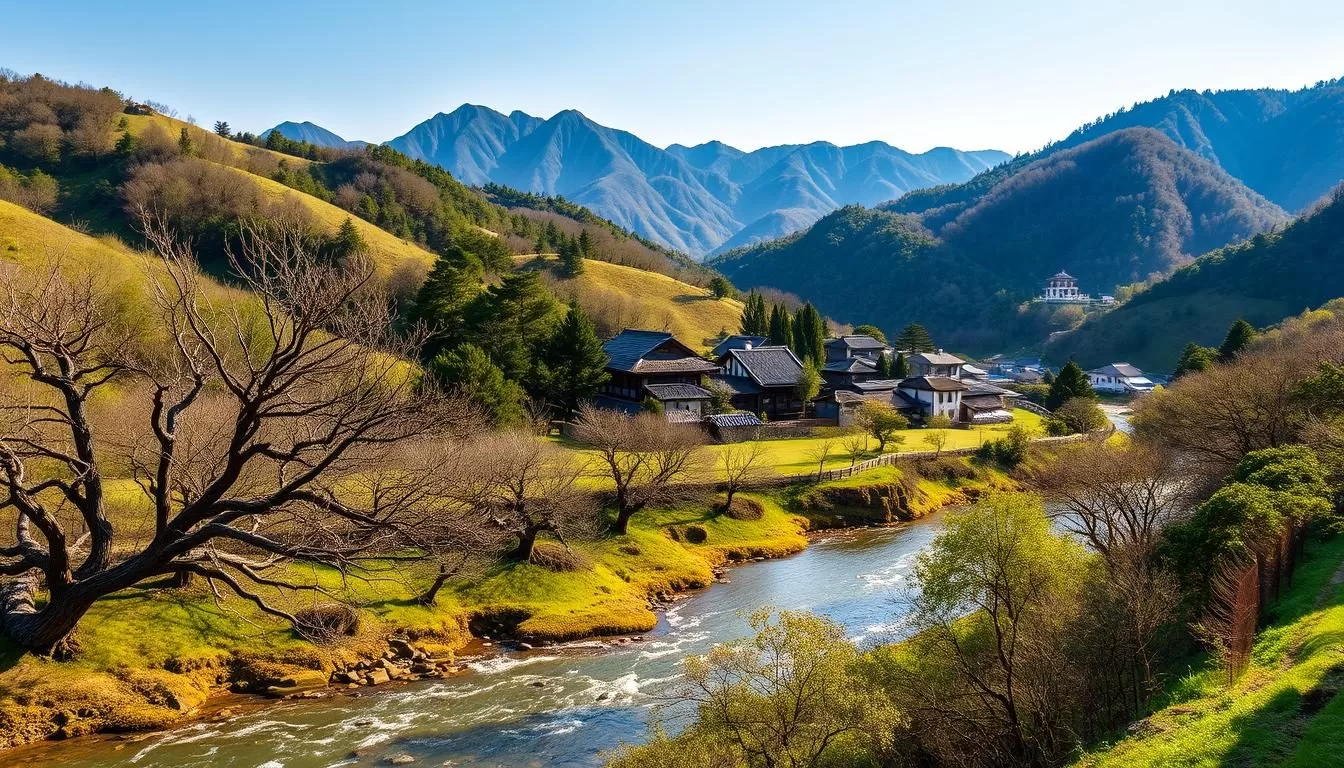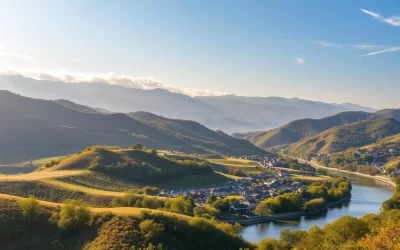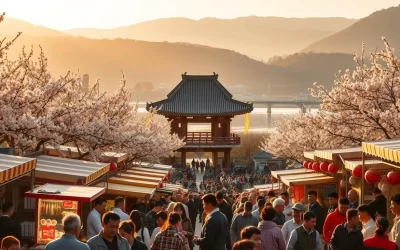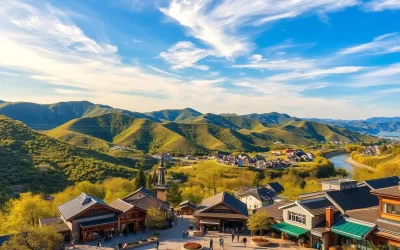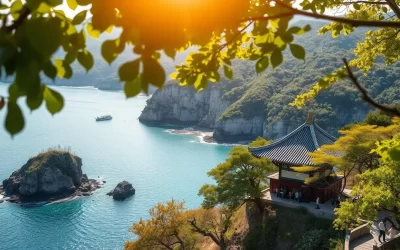Imagine stepping into a region where ancient kingdoms once flourished, and breathtaking landscapes unfold. Welcome to a part of South Korea that embodies the essence of the country‘s rich history and culture. Covering one-fifth of the land, this largely rural area offers a serene escape from the bustling cities, inviting you to experience the authentic charm of traditional Korean life.
As you plan your trip, get ready to explore the ancient Silla capital, spiritual heartlands, and modern urban attractions. This comprehensive guide will be your companion in uncovering the treasures of this captivating region, ensuring a journey that is both enriching and memorable.
Discovering North Gyeongsang Province: A Land of History and Beauty
The southeastern region of South Korea, particularly North Gyeongsang Province, is a haven for those seeking a mix of culture, history, and natural splendor. This region, known for its majestic mountains and rich folklore, offers a plethora of experiences that showcase the best of what South Korea has to offer.
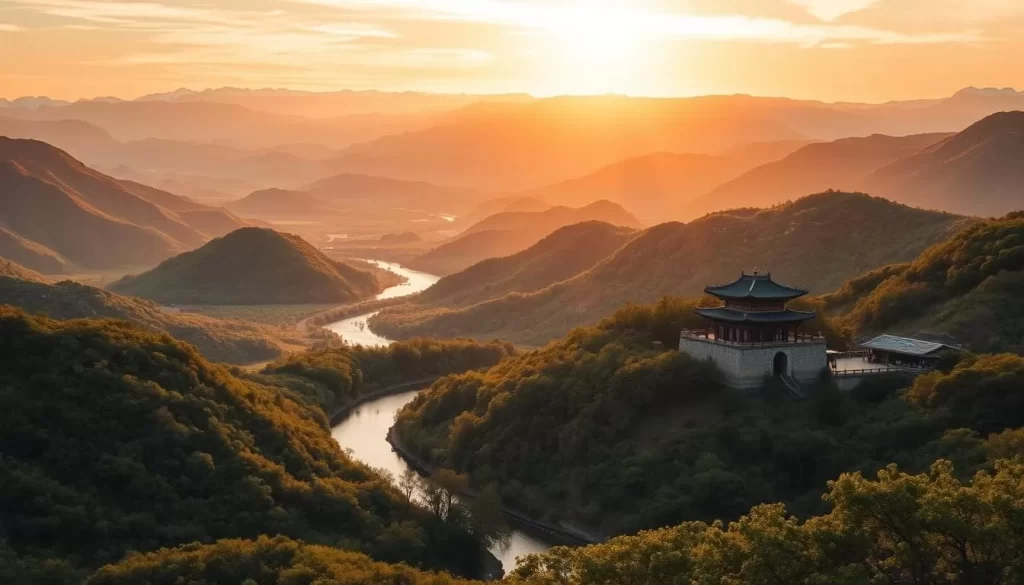
The Historical Significance of Gyeongbuk
North Gyeongsang Province, or Gyeongbuk, is steeped in history, having been the base of the Silla kingdom that ruled Korea for nearly a thousand years. The legacy of this ancient kingdom is still visible in the numerous regal tombs, temples, and jewellery that have been preserved to this day. As you visit this region, you’ll have the opportunity to explore these historical sites, gaining a deeper understanding of Korea’s rich cultural heritage.
The historical significance of Gyeongbuk is not limited to its ancient ruins; it’s also a place where you can experience the traditional culture of Korea. From the intricate designs of its ancient artifacts to the serene beauty of its temples, every aspect of Gyeongbuk tells a story of a bygone era.
When to Visit and How to Get There
Planning your trip to North Gyeongsang Province requires considering the best time to visit. Spring (April-May) is ideal for witnessing the beautiful cherry blossoms and enjoying pleasant temperatures. Autumn (September-October) is another excellent season, with spectacular foliage, especially around temple sites and mountains. In contrast, summer can be quite hot due to the province’s geological formation, while winters are cold but less crowded.
To get to North Gyeongsang Province, you can take the KTX high-speed train from Seoul to Daegu, a journey of approximately two hours. From Daegu, you can connect to smaller city like Gyeongju and Andong via buses. For international travelers, flying into Incheon International Airport or Daegu International Airport provides more direct access to the region. A trip of at least 4-7 days is recommended to explore the major highlights, though you could easily spend two weeks discovering all its treasures. While public transportation is available, renting a car can offer more flexibility, especially for exploring rural areas and remote temples.
Gyeongju: The Ancient Capital of Silla Kingdom
As you step into Gyeongju, you’re walking into a city that’s steeped in the rich heritage of the Silla dynasty. This ancient capital, which served as the heart of the Silla empire from 57 BC to 935 AD, is now a repository of historical treasures waiting to be explored.
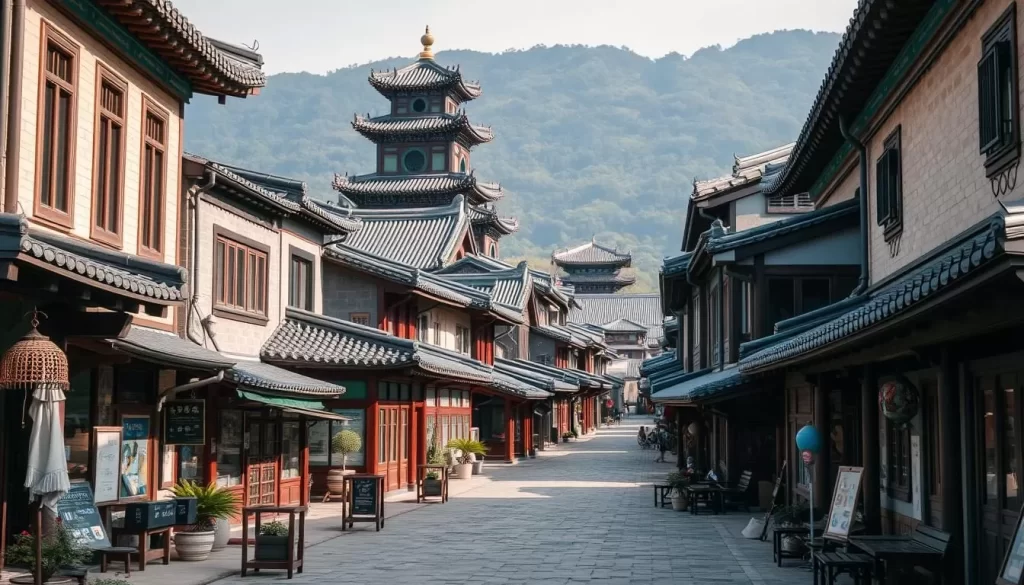
Bulguksa Temple and Seokguram Grotto
Gyeongju is home to numerous historical sites, including the revered Bulguksa Temple and the Seokguram Grotto. Bulguksa, one of Korea’s most venerated temples, is renowned for its beautiful gardens and intricate architecture. Seokguram Grotto, a granite masterpiece, houses a majestic Buddha statue that symbolizes the spiritual essence of the Silla era.
Royal Tombs and Tumuli Park
The Royal Tombs and Tumuli Park in Gyeongju are a testament to the city’s rich royal heritage. These tombs, often in the form of small hillocks, were the final resting places of the Silla kings, queens, and nobles. The Tumuli Park is a sprawling archaeological site that provides a glimpse into the funerary practices and the historical significance of the Silla Kingdom.
Donggung Palace and Wolji Pond
Donggung Palace and Wolji Pond, formerly known as Anapji, are the spectacular remains of the Silla dynasty’s secondary palace complex, built in 674 CE during the reign of King Munmu. This complex served as the crown prince’s residence and a venue for state banquets and important ceremonies. After being forgotten for centuries, the site was rediscovered in 1975 following a major drought that revealed ancient artifacts in the dried pond bed.
The beauty of Donggung Palace and Wolji Pond is particularly striking at night when the buildings and their reflections in the pond are illuminated, creating one of the most photogenic scenes in Gyeongju. A small museum on site displays some of the 33,000 artifacts recovered from the pond, including roof tiles, pottery, and figurines that provide insight into palace life during the Silla period.
The Underwater Tomb of King Munmu

The underwater tomb of King Munmu, situated off Gyeongju’s coast, is a captivating historical site that combines natural beauty with cultural significance. King Munmu, who ruled the Silla Kingdom from 661 to 681 AD, was a significant figure in Korean history.
The Legend of the Sea Dragon
According to legend, King Munmu requested to be buried at sea, believing it would turn him into a sea dragon protecting the kingdom. This unique tomb is a reflection of his wish, blending history and mythology.
The legend continues with the story of his son, King Sinmun, who built Gameunsa Temple in honor of his father. Just 1km inland, you can still see the two giant stone pagodas, 13m high, marking the former site of Gameunsa.
Visiting Tips and Nearby Attractions
To visit King Munmu’s Underwater Tomb, take bus #150 from Gyeongju’s intercity bus terminal to Bonggil Beach, a journey of approximately 40 minutes. For the best experience, visit early morning or late afternoon when the lighting is dramatic and crowds are smaller.
While you’re there, explore nearby attractions like the Gameunsa Temple site and the East Sea Road, which offers spectacular coastal views. Enjoy fresh seafood at local restaurants near the beach, specializing in raw fish, grilled mackerel, and seafood stews. You might even witness traditional shamanist ceremonies on the beach, honoring the sea spirits.
Combining your trip to the underwater tomb with visits to nearby Golgulsa and Girimsa temples makes for a fulfilling day excursion from Gyeongju, immersing you in the region’s rich history and natural beauty.
Andong: Korea’s Spiritual Heartland
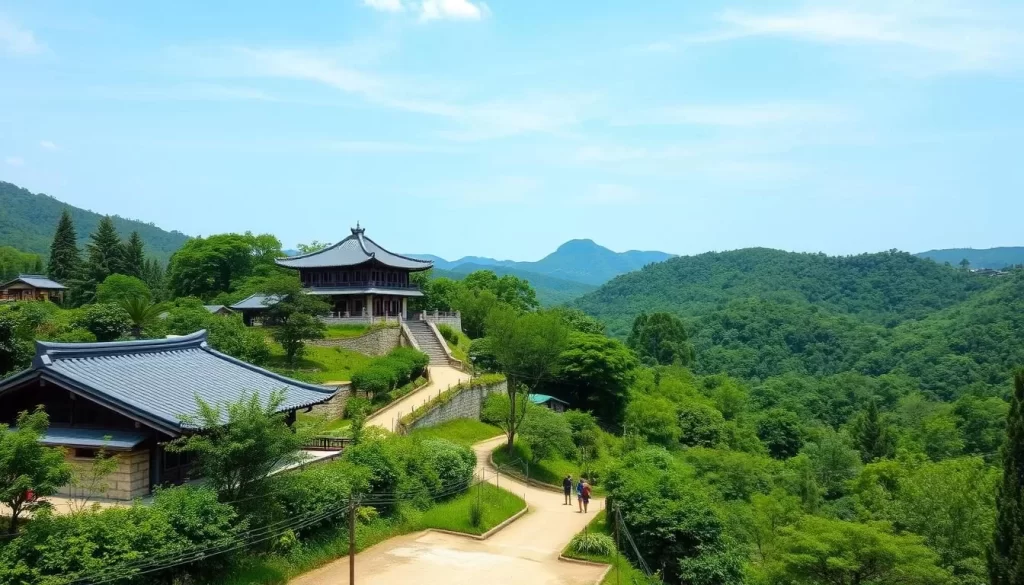
As you step into Andong, you are transported into a world where Korea’s spiritual heartland comes alive. This city is a treasure trove of traditional Korean culture, where the legacy of the Joseon dynasty and the profound influence of Confucianism are palpable.
Dosan Seowon: A Confucian Academy
Dosan Seowon, a revered Confucian academy, stands as a testament to the enduring legacy of Toegye Yi Hwang, one of Korea’s most venerated scholars. Built in his honor, this serene complex embodies the contemplative spirit of the Confucian era.
Toegye Yi Hwang, whose pen name is inscribed on the 1,000-won note, was a paragon of virtue and intellect. His contributions to neo-Confucian thought, particularly his theories on the interplay between principle (i) and material force (ki), have had a lasting impact on Korean philosophy.
The Legacy of Toegye Yi Hwang
Toegye’s life was a testament to his unwavering commitment to integrity and meritocracy. Despite facing exile multiple times for his uncompromising stance against corruption, his legacy as a champion of moral values and education continues to inspire Koreans to this day.
His literary achievements, including the “Ten Diagrams on Sage Learning,” systematized Confucian teachings, making them more accessible. Toegye’s emphasis on moral cultivation and the balance between knowledge and action remains a cornerstone of Korean education and life.
In Andong, you can experience the rich cultural heritage of South Korea firsthand. The city’s historical significance, coupled with its natural beauty, makes it a compelling destination for those interested in exploring the depths of Korean tradition and spirituality.
Hahoe Folk Village: Step Back in Time
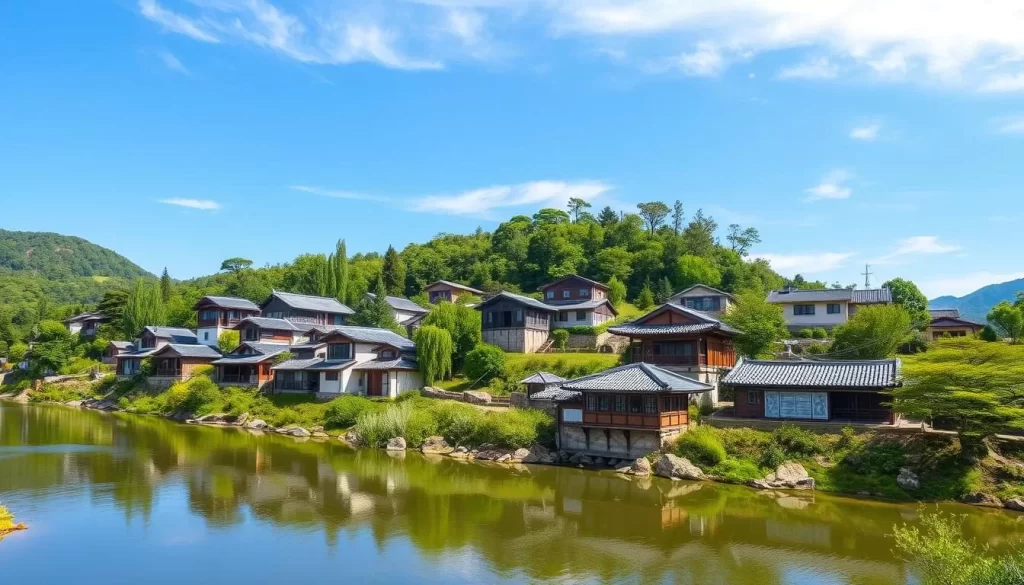
Nestled in the gentle curves of a serene river, Hahoe Folk Village offers a unique glimpse into Korea’s rich cultural heritage. This charming village is home to over a hundred traditional countryside houses, providing a picturesque setting that feels like a step back in time.
Traditional Architecture and Daily Life
The village is a living example of traditional Korean architecture, with mud walls, thatched roofs, and dusty trails that invite exploration. You can spend hours inspecting the buildings, relaxing by the river, and learning about the village’s history through information boards.
The Yangjin residence, the oldest in the village, is a must-visit, showcasing a blend of Goryeo- and Joseon-era styles. As you wander through the village, you’ll experience the slow pace of rural life, where residents live on a mix of home-grown vegetables, government subsidies, and tourist-generated income.
Mask Dance Performances and Cultural Events
Hahoe Folk Village is renowned for its traditional mask dance performances, known as Hahoe Byeolsingut Tallori, which satirize the yangban aristocracy and Buddhist monks. The Hahoe masks, considered national treasures, represent various character types, including the yangban, the bride, and spirits.
You can witness these performances on weekends and holidays at the Hahoe Mask Dance Performance Hall, which combine comedy, social commentary, and spiritual elements. The village also hosts the Andong International Mask Dance Festival, drawing performers worldwide, and other cultural events like Daeboreum celebrations.
Visitors can engage deeper with village traditions through hands-on activities such as mask-making workshops, traditional paper crafting, and Korean cooking classes.
North Gyeongsang Province, South Korea: Best Things to Do for Nature Lovers
Nature lovers will find their paradise in North Gyeongsang Province, with its rich natural beauty and varied outdoor pursuits. From hiking in national parks to exploring remote islands, there’s something for every nature enthusiast.
Hiking in Sobaeksan National Park
Sobaeksan National Park is a hiker’s dream, with its diverse trails, scenic landscapes, and rich biodiversity. The park is home to numerous temples, valleys, and peaks, offering a serene escape from urban life. You can hike to the summit of Birobong, the highest peak, or explore the picturesque valleys and enjoy the local flora and fauna.
Key Highlights:
- Diverse hiking trails for all levels
- Scenic landscapes and rich biodiversity
- Historic temples and cultural sites
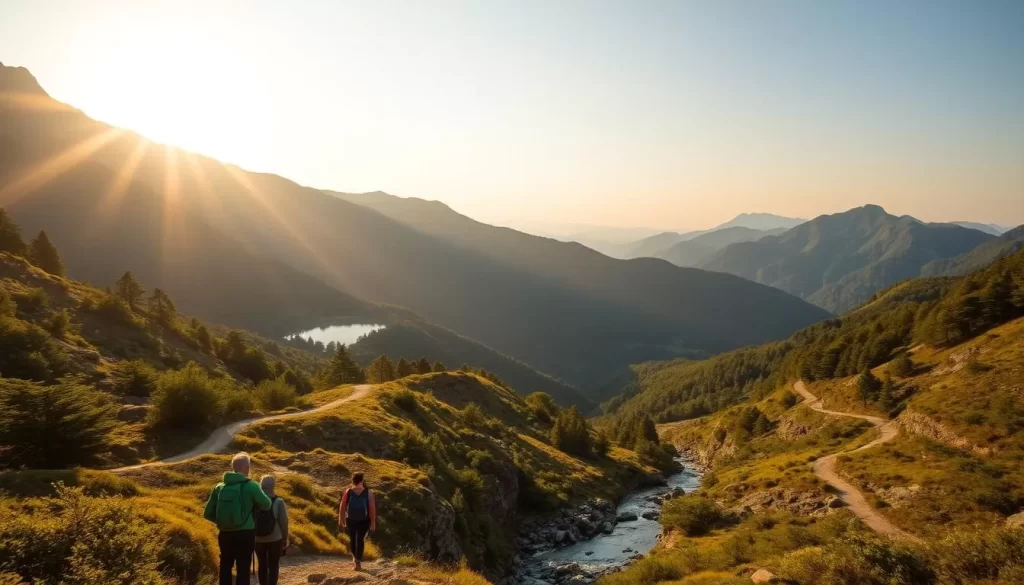
Exploring Ulleungdo Island
Ulleungdo Island is a remote volcanic island in the East Sea, accessible by ferry from Pohang or Mukho ports. The island boasts dramatic landscapes, including sheer cliffs, dense forests, and hidden waterfalls, all centered around the extinct volcanic peak of Seonginbong.
You can explore the island’s unique ecosystem, which has evolved due to its isolation, featuring rare endemic plants like the Ulleung bamboo. Traditional fishing and farming practices continue unchanged, offering a glimpse into pre-industrial Korean life.
Trip Itinerary:
- Hike the Seonginbong Peak trail
- Circumnavigate the island by boat to see formations like Elephant Rock
- Sample local specialties such as squid, pumpkin, and medicinal mountain herbs
When planning your trip to Ulleungdo, consider the ferry schedules, which can be affected by weather, and choose from various accommodation options, including small hotels and minbak (homestays). The best time to visit is from late spring through early fall.
Temple Stays and Buddhist Heritage
Temple stays in North Gyeongsang Province provide a unique opportunity to experience Korean Buddhism firsthand. You can immerse yourself in the daily routines of monks and nuns, gaining a deeper understanding of Buddhist practices and traditions.
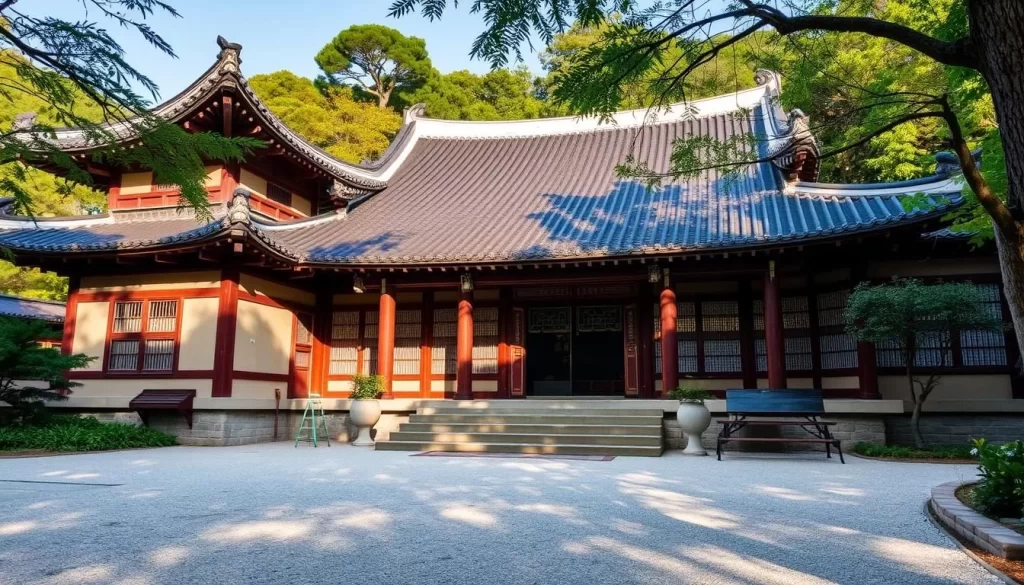
Golgulsa Temple and Seonmudo Martial Arts
Golgulsa Temple is renowned for its Seonmudo martial arts program, a unique blend of physical exercise and meditation. Seonmudo, which translates to “Zen martial arts,” is a practice that cultivates both body and mind. Visitors can participate in Seonmudo training sessions, experiencing the discipline and focus required for this ancient practice.
The temple’s setting amidst the beautiful countryside adds to its allure, making it an ideal destination for those seeking a spiritual retreat.
Girimsa Temple: Off the Beaten Path
Girimsa Temple, located about 16km east of Gyeongju, is a serene and off-the-beaten-path Buddhist sanctuary. Founded in 643 CE, it is one of the oldest temples in the region. The temple is surrounded by mountains and rice paddies, creating a tranquil atmosphere that is a welcome respite from the more crowded tourist sites.
Visitors can explore the temple’s architectural highlights, including the main Daeungjeon Hall, a three-story stone pagoda, and an ancient Bodhi tree said to be over 500 years old. The temple’s collection of stone lanterns and statues of the Goddess of Mercy showcase the artistic traditions of Korean Buddhism.
Combining a trip to Girimsa with nearby temples like Golgulsa allows visitors to explore the diverse expressions of Korean Buddhist architecture and practice, away from the crowds.
Daegu: Urban Delights in North Gyeongsang
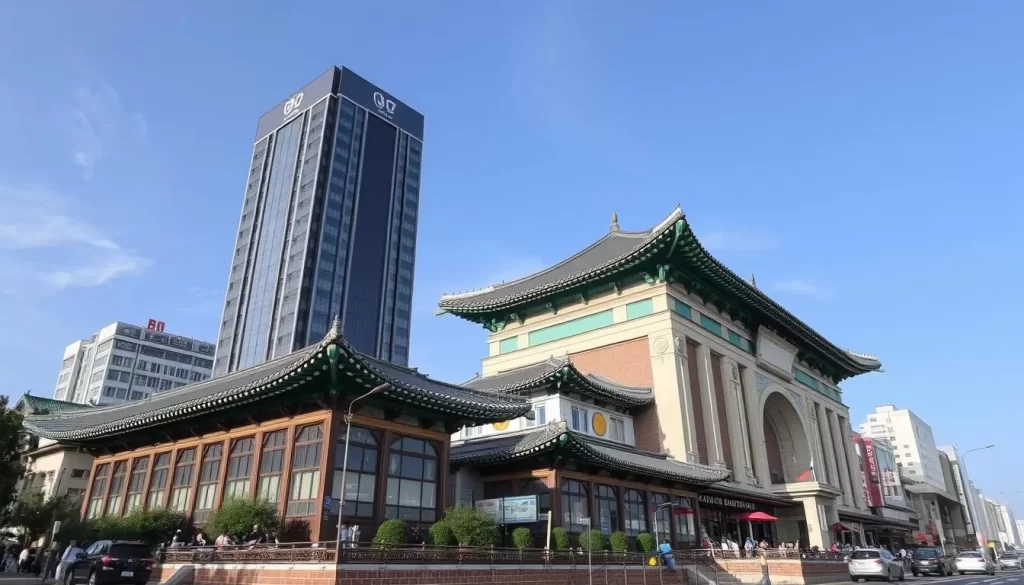
In the heart of North Gyeongsang Province lies Daegu, a city that’s as fascinating as it is unexpected. While it may not be traditionally considered a beauty, Daegu has a unique charm that makes it worth visiting.
Shopping Districts and Local Specialties
Daegu is a shopper’s paradise, with districts like Seomun Market offering a blend of traditional and modern shopping experiences. You can find everything from local specialties like Daegu’s famous apples to unique souvenirs. The city’s shopping scene is complemented by its local cuisine, which includes dishes that reflect the region’s culinary heritage.
When in Daegu, take the opportunity to indulge in the local flavors and explore the various places that offer a taste of authentic Korean cuisine.
Modern Culture and Nightlife
Daegu has transformed into one of South Korea‘s most dynamic cultural hubs, boasting a thriving arts scene centered around venues like the Daegu Opera House and numerous galleries. The city’s vibrant nightlife is concentrated in areas like Dongseongno, where you can enjoy everything from traditional Korean pubs to trendy cocktail bars and nightclubs.
For a fulfilling experience in Daegu, plan to spend at least 2-3 days exploring its cultural performances, nightlife, and modern attractions. This will give you a comprehensive taste of urban life in Daegu, showcasing its unique blend of tradition and modernity.
Culinary Journey Through North Gyeongsang
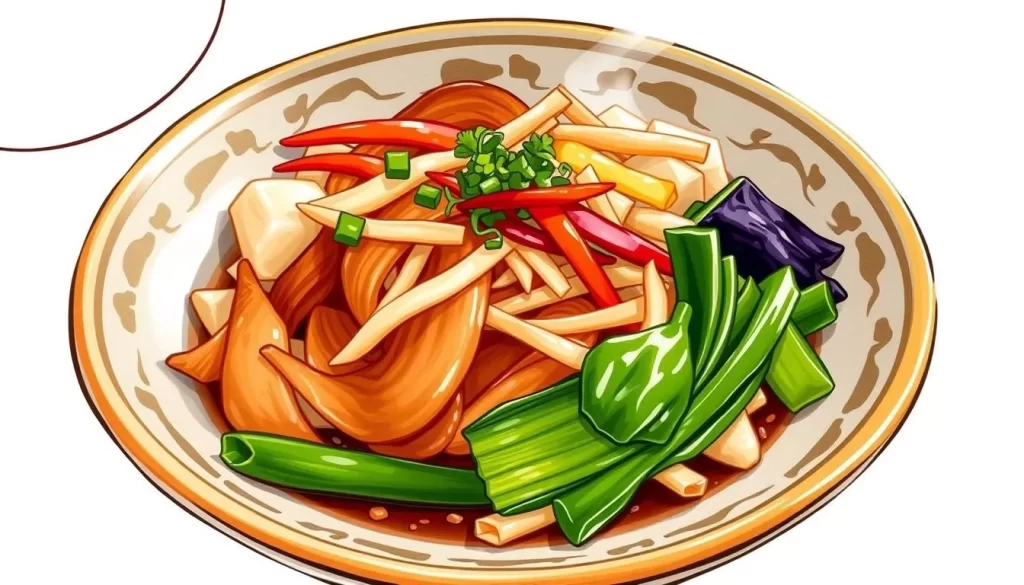
The rich culinary heritage of North Gyeongsang Province is a treasure trove of flavors and dining experiences. As you explore this region, you’ll discover a blend of traditional Korean cuisine and local specialties that reflect the area’s history and culture.
Regional Specialties and Must-Try Dishes
North Gyeongsang Province is renowned for its local specialties, which include dishes made from fresh ingredients sourced from the region’s mountains and seas. Be sure to try some of the must-try dishes that showcase the unique flavors of the area. From hearty stews to delicate seafood, the region’s cuisine is characterized by its emphasis on freshness and seasonality.
Some of the standout dishes include Andong jjimdak, a savory braised chicken dish, and ssam (wrapped) meals, which feature fresh greens and various accompaniments. These dishes not only highlight the region’s culinary expertise but also offer a taste of the local culture.
Food Markets and Dining Experiences
To experience the authentic flavors of North Gyeongsang, visit the bustling food markets and restaurants throughout the province. Seomun Market in Daegu is a must-visit, especially its famous night food alley, where you can sample a variety of street foods. Andong’s Jungang Market is another highlight, offering a range of traditional snacks and meals.
For a unique dining experience, try a traditional meal served on low tables in historic places like hanok houses, or participate in a temple food experience that showcases Korean Buddhist vegetarian cuisine. These experiences not only delight your taste buds but also provide insight into the region’s culinary traditions and cultural practices.
Practical Travel Tips for North Gyeongsang Province
Getting the most out of your trip to North Gyeongsang Province involves more than just knowing the top attractions; it also requires understanding the local way of life in South Korea. To ensure a smooth and enjoyable journey, here are some practical tips to consider.
Transportation Options
North Gyeongsang Province is well-connected by various transportation modes. You can reach the province by flight, train, or bus. The KTX (Korea Train Express) is a convenient option for traveling to major cities like Gyeongju and Andong. Once you arrive, local buses and taxis are readily available for shorter distances.
| Mode of Transport | Route | Frequency |
|---|---|---|
| KTX Train | Seoul to Gyeongju/Andong | Multiple times a day |
| Local Bus | Within cities and to nearby attractions | Frequent |
| Taxi | Available at train stations and city centers | On demand |
Accommodation Recommendations
From traditional hanok stays to modern hotels, North Gyeongsang Province offers a wide range of accommodations to suit different preferences. In Gyeongju, consider staying near the city center to access major attractions easily. Andong also offers unique hanok experiences that allow you to immerse yourself in traditional Korean culture.
Cultural Etiquette for Visitors
As you explore North Gyeongsang Province, respecting local traditions and customs will enhance your experience. When visiting temples, dress modestly by covering your shoulders and knees, and remove your shoes before entering buildings. At dinner, wait for the eldest person to start eating before you begin, and be mindful of chopstick etiquette. In traditional villages, removing your shoes before entering homes and showing respect to family elders is appreciated. Learning a few basic Korean phrases, such as “annyeonghaseyo” (hello), can also go a long way in showing respect for the local culture.
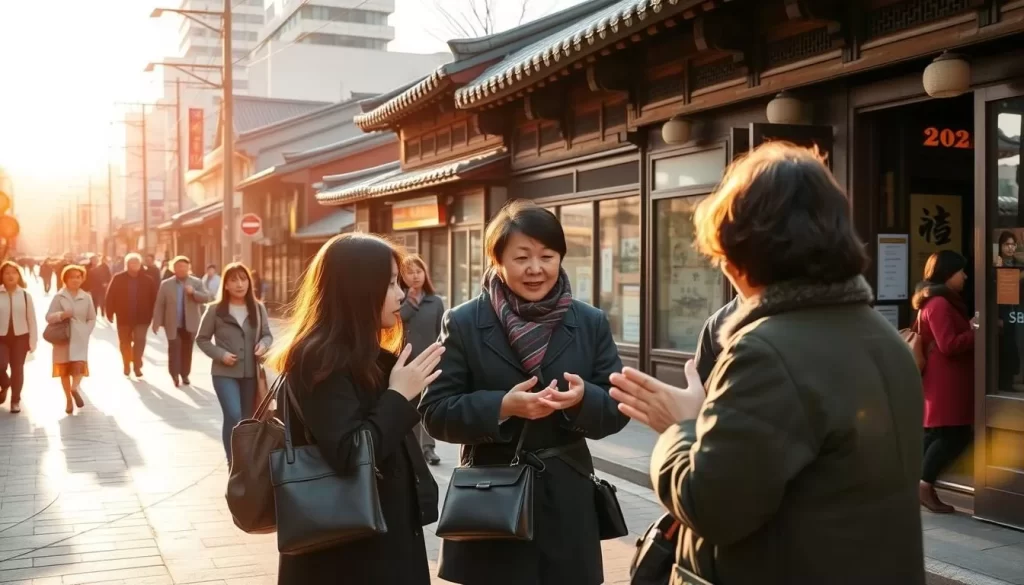
Conclusion
North Gyeongsang Province is more than just a destination; it’s an immersive experience into the heart of South Korea’s rich heritage. As you reflect on your trip to this remarkable region, you’ll find that it offers an authentic glimpse into the country‘s soul, where ancient history and spiritual traditions harmoniously coexist with natural beauty and modern culture.
The province provides a profound understanding of Korean identity through its preservation of historical sites, traditional villages, and cultural practices that have shaped the country for millennia. Whether you’re interested in exploring the ancient capital of Gyeongju, experiencing the tranquility of temple stays, or enjoying the urban delights of Daegu, North Gyeongsang has something to offer every kind of traveler.
Depending on your interests and time constraints, you can plan your visit anywhere from a 3-day highlights tour to a comprehensive 10-day exploration of the region’s diverse attractions. Venturing beyond Seoul to experience this less-visited but richly rewarding region reveals a different side of South Korea than what most international visitors typically see.
As you explore North Gyeongsang Province, we encourage you to embrace the slower pace and deeper cultural immersion it offers. Allow time for unexpected discoveries and meaningful connections with local people and traditions. In doing so, you’ll uncover the essence of this remarkable province, which stands as a living museum of Korean heritage while continuing to write new chapters in its long and storied history.
